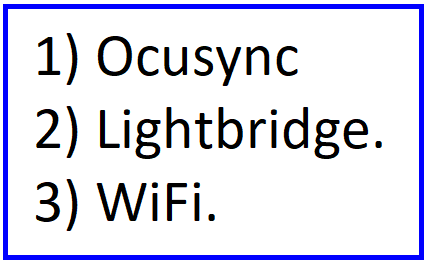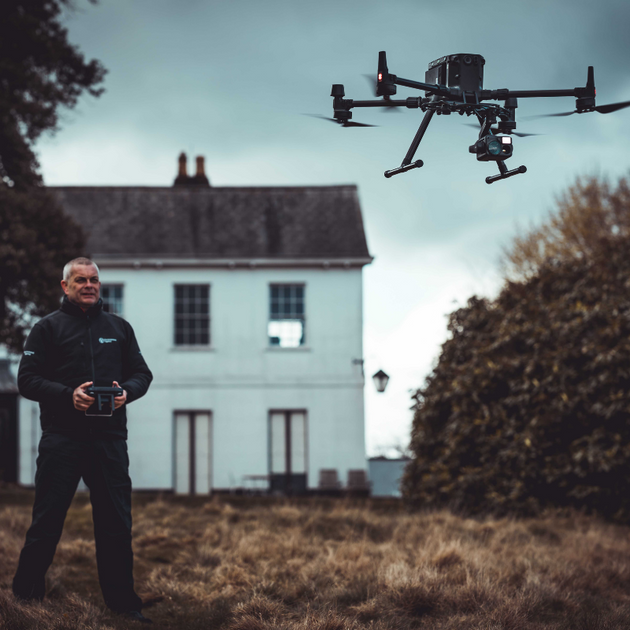You are using an out of date browser. It may not display this or other websites correctly.
You should upgrade or use an alternative browser.
You should upgrade or use an alternative browser.
Wi-Fi vs occusync 2.0.
- Thread starter Rchawks
- Start date
Dedal
Well-Known Member
I'm sure you're gonna get plenty of technical explanation here, but as long as you're waiting, you can read about it here:


 3dinsider.com
3dinsider.com

 www.heliguy.com
www.heliguy.com

Ocusync, Lightbridge And WiFi Drone Connections Explained
Drones Have Different Connections That Help Them Fly Further. The 3 Most Common Are Ocusync, Lightbridge And WiFi. Here You\'ll See Which is Best For You to Use.
thedroneadventure.com

DJI Transmission Systems: Wi-Fi vs. OcuSync vs. Lightbridge
There are a couple of components that make an excellent drone: a powerful propulsion system, a high- quality camera, long flight time, and responsive controls. One element of a good drone that is often taken

DJI Transmission Systems – Wi-Fi, OcuSync & Lightbridge
DJI Transmission Systems – Wi-Fi, OcuSync & Lightbridge Drone transmission systems can have a huge effect on the capabilities of your drone. They give very different results, meaning you need to pick a transmission system that’s right for you when selecting your drone. DJI use three key...
 www.heliguy.com
www.heliguy.com
- Joined
- Feb 8, 2018
- Messages
- 8,100
- Reactions
- 13,286
- Age
- 54
Can someone give a quick rundown on why occusync is superior to wi-fi for the non tech members?
Wi Fi i very limited to a shorter distance with much more potential for a dis- connect.
There is no comparison to OccuSync 2.0 as its the best that we have right with these types of drones..
The Occusync allows for the drone to decide the best signal to use allowing you a a more secure flight in a variety of flying conditions.
This is one of the reason why the Air 2 is such a nice upgrade from the Air.
Phantomrain.org
Gear to fly your Mavic in the rain
Coal
.
Last edited:
Dedal
Well-Known Member
its all down to the way that the signal from the RC is generated, there is a random code no that is generated when the drone and RC link and this encoded link is what keeps the signal so stable and less prone to interference, this radiated signal also produces heat and thats why the RC and drone need the cooling fans in them,all that is actually transmitted is just a stream of zeros or ones which when they reach the processor in the drone are converted back into the command made by the RC
itsneedtokno
I'm chillin, appreciate it though.
Mousehunter
Active Member
Unless I am mistaken, WiFi’s and OccuSync use the same publicly available radio bands, but different transmition methods designed for different purposes - wifi was designed for networking computers inside buildings, OccuSync was optimized for flying DJI drones.
Given DJI’s AeroScope and Drone-to-Phone initiative, OccuSync is not completely uncompatable with Wifi. That said, not sure if it is that OccuSync can send a WiFi readable signal, or an app can decode an OccuSync coded signal.
Given DJI’s AeroScope and Drone-to-Phone initiative, OccuSync is not completely uncompatable with Wifi. That said, not sure if it is that OccuSync can send a WiFi readable signal, or an app can decode an OccuSync coded signal.
Last edited:
Dave Maine
Well-Known Member
- Joined
- Jan 27, 2018
- Messages
- 1,534
- Reactions
- 1,112
- Age
- 81
OcuSync and wifi use exactly the same frequencies for control and video download. OcuSync has more robust data exchange structures to reduce interference and weak signal issues.
jackalope
Member
I'm fascinated by the sheer range with Ocusync. I have a Parrot Anafi, and Inspire 1, and just got a Mavic Pro. The Anafi and Inspire 1 are limited to 1000 feet in developed areas, maybe 2000 feet in more rural places. The Mavic can go much further, I've even met someone who flew his several miles away. Is it really because of different protocols? It seems crazy that the same frequencies as wifi can travel so much further. Is it also much higher wattage?
anotherlab
Well-Known Member
It's pretty much what @Dave Maine wrote. Same radio frequencies (Ocusync uses wi-fi chipsets), but highly optimized for drone control and video downloads.Can someone give a quick rundown on why occusync is superior to wi-fi for the non tech members?
Agree, and occusync 3.0 on FPV drone is a better looking forward to being in the next camera drone.There is no comparison to OccuSync 2.0 as its the best that we have right with these types of drones..
The Occusync allows for the drone to decide the best signal to use allowing you a a more secure flight in a variety of flying conditions.
This is one of the reason why the Air 2 is such a nice upgrade from the Air.
Phantomrain.org
Gear to fly your Mavic in the rain
Coal
.
I have a mini 1(wifi) and a air 2 (occusync 2.0).... i love the mini but only if im flying VERY close (its tiny).... occusync 2.0 on the air 2 is far superior especially if your flying around or above dense trees...
Greekislandlover
Well-Known Member
I went from a Spark with WiFi to a Mavic 2 with Occusync. With the Spark, signal would drop out even with VLOS. The Spark is a small drone, so it's not too far before it goes out of range. With the Mavic 2, the range you get is literally miles! WAY beyond VLOS and even works behind large obstacles.
I loved my Spark. It was tough as old boots and survived many a good biffing. Shame it didn't have a better gimbal and Occusync 2.
I loved my Spark. It was tough as old boots and survived many a good biffing. Shame it didn't have a better gimbal and Occusync 2.
Thanks - was your Spark in FCC though?I went from a Spark with WiFi to a Mavic 2 with Occusync. With the Spark, signal would drop out even with VLOS. The Spark is a small drone, so it's not too far before it goes out of range. With the Mavic 2, the range you get is literally miles! WAY beyond VLOS and even works behind large obstacles.
I loved my Spark. It was tough as old boots and survived many a good biffing. Shame it didn't have a better gimbal and Occusync 2.
Greekislandlover
Well-Known Member
No it would have been CE as I live in the UK. However, the difference between the 2 transmission methods is astounding. Even CE Occusync allows incredible range and stability.
Kilrah
Well-Known Member
Yes, Ocusync wins by far.Has anyone compared ocusync 2.0 CE to Wifi FCC?
Wi-Fi is designed for short ranges up to about 100m, so that they could customise it to get usable bandwidth out of it at 1km or more is already pretty impressive. Ocusync is built using customised LTE (4G) cellular equipment which is designed for more range in the first place.
anotherlab
Well-Known Member
I don't think the CE/FCC power differences matter as much as Ocusync vs Wi-Fi. Wi-Fi is a general-purpose network technology. Ocusync is highly optimized for one set of tasks, drone control and drone video transmission.Has anyone compared ocusync 2.0 CE to Wifi FCC?
Similar threads
- Replies
- 13
- Views
- 895
- Replies
- 19
- Views
- 3K
- Replies
- 19
- Views
- 2K
DJI Drone Deals
1. Mini 2
2. Mini 3 Pro
3. Mini 4 Pro
4. Air 2s
5. Air 3
6. Avata 2
7. Mavic 3 Pro
8. Mavic 3 Classic
2. Mini 3 Pro
3. Mini 4 Pro
4. Air 2s
5. Air 3
6. Avata 2
7. Mavic 3 Pro
8. Mavic 3 Classic
New Threads
-
-
-
-
DJI Mini 4 "Aircraft Storage Full" (Code1C001COA) - clearing via Mac not fixing it
- Started by jorgie2u
- Replies: 2
-











